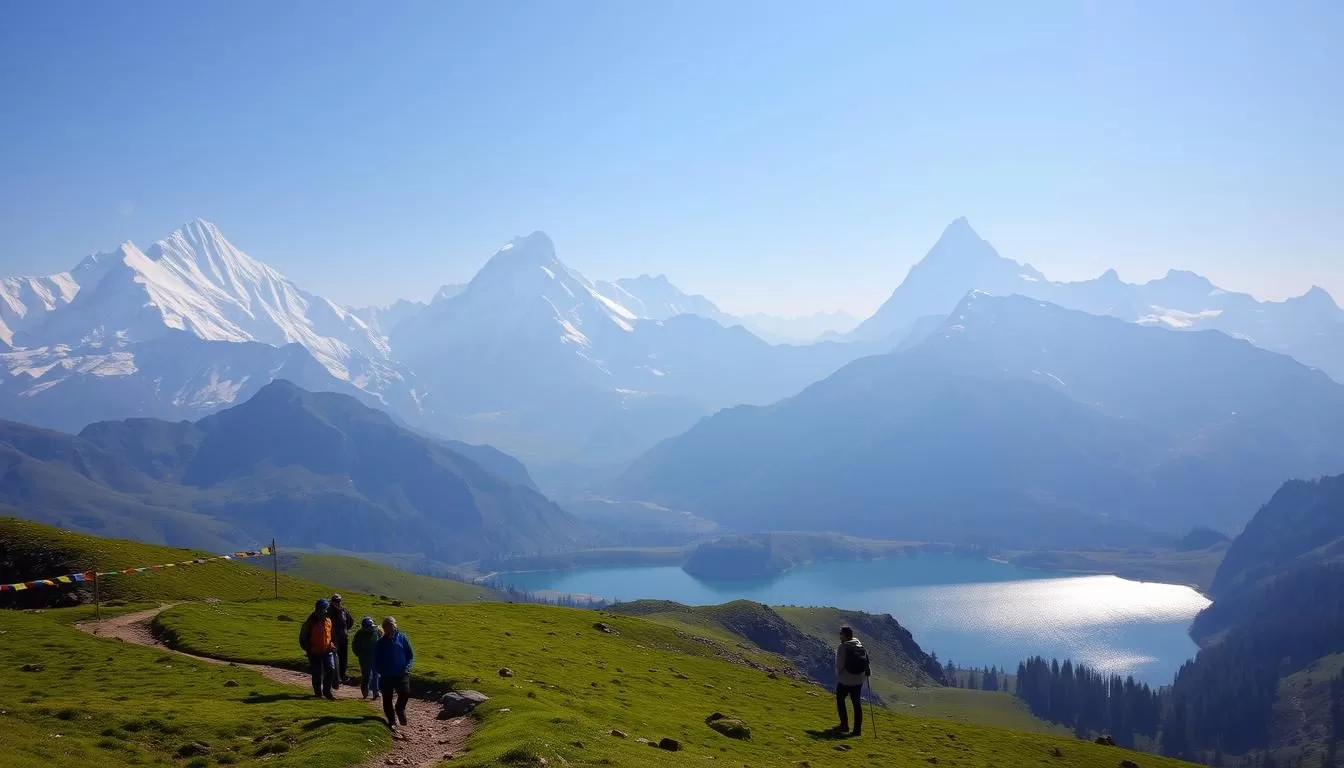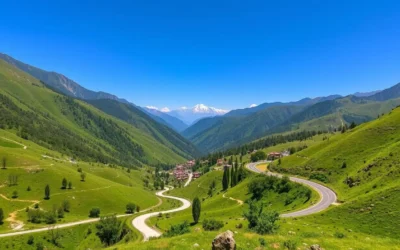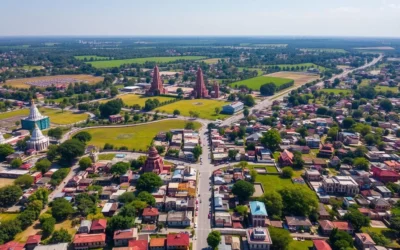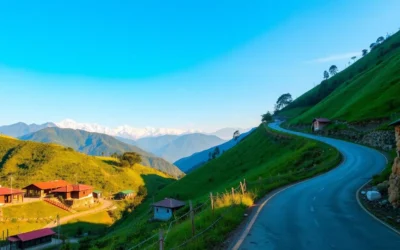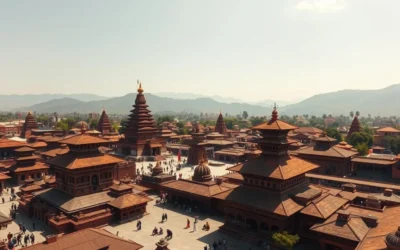✓ Accommodations ✓ Flights ✓ Rental Cars ✓ Tours & Activities
Imagine a destination that offers towering mountains, rich cultural heritage, and exciting adventures. You’re in for a treat! Nepal is home to eight of the world’s tallest peaks, but that’s not all it has to offer.
The country‘s unique blend of natural wonders, cultural experiences, and adventure activities makes it a must-visit for travelers. From the majestic Himalayan mountains to ancient temples and vibrant cultural traditions, Nepal provides a diverse range of experiences that you won’t find anywhere else.
Whether you’re an adventure seeker or a cultural enthusiast, Nepal has something special for you. Get ready to explore the top things to do in this incredible destination.
Discovering the Wonders of Nepal
With its unique blend of natural wonders and cultural significance, Nepal is a destination like no other. As you explore this incredible country, you’ll discover a land of breathtaking natural beauty and rich cultural heritage.
What Makes Nepal a Unique Destination
Nepal stands out as a unique travel destination because of its remarkable blend of natural beauty, cultural heritage, and spiritual significance all packed into a relatively small country. The dramatic geography of Nepal creates diverse ecosystems ranging from subtropical jungles to alpine meadows, all within short distances of each other. This diversity makes Nepal an exciting place to explore.
Nepal’s rich cultural heritage is evident in its seven UNESCO World Heritage sites, most of which are concentrated in the Kathmandu Valley. The country’s unique position between India and Tibet has created a fascinating cultural melting pot that influences everything from architecture to cuisine.

Best Time to Visit Nepal
Understanding the best time to visit is crucial for planning your trip to Nepal. The best months to visit Nepal are October to November and March to April, offering the most pleasant weather and clearest mountain views. During these periods, you can enjoy trekking and other outdoor activities without the challenges posed by extreme weather conditions.
| Season | Months | Weather Conditions |
|---|---|---|
| Autumn | October to November | Pleasant weather, clear mountain views |
| Spring | March to April | Mild temperatures, blooming flora |
| Monsoon | June to September | Lush landscapes, challenging trekking conditions |
| Winter | December to February | Clear skies, colder temperatures at higher elevations |
Nepal’s heritage sites and natural beauty make it a significant destination in the world. By planning your visit during the optimal seasons, you can fully experience the wonders that Nepal has to offer.
Trekking in the Himalayan Mountains
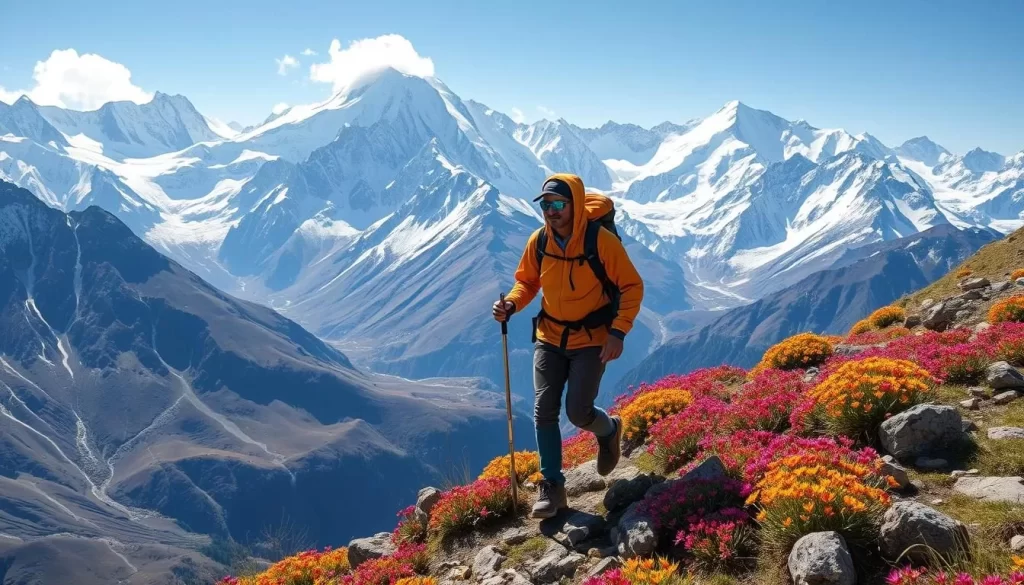
Trekking in Nepal’s Himalayas is a journey through breathtaking landscapes and rich cultural heritage. You can explore the world’s highest mountain range without needing to climb a mountain, hiking along rural paths, through villages, valleys, and forests.
Nepal is famous for its mountain trekking, with modern-day routes utilizing trails used for centuries. There’s a wide range of trekking options, from leisurely day walks at lower altitudes to multi-week expeditions. You can choose between camping, teahouse treks, or upmarket lodges, suiting any energy level, budget, and time constraint.
Everest Base Camp Trek
The Everest Base Camp trek is a renowned route, taking you through Sherpa villages and monasteries to the foot of the world’s highest mountain over 12-14 days. This trek is a highlight of any trip to Nepal, offering spectacular views and a unique cultural experience.
Annapurna Circuit
Image of Annapurna Circuit
The Annapurna Circuit offers incredible diversity, passing through subtropical forests, arid landscapes, and crossing the challenging Thorong La pass at 5,416 meters. This trek is a true adventure, showcasing the natural beauty of the mountains.
Lesser-Known Trekking Routes
Image of Langtang Valley
For those looking to venture off the beaten path, trekking routes like Langtang Valley, Manaslu Circuit, and Upper Mustang provide equally stunning views with fewer crowds. These routes offer a more secluded trekking experience in the mountains.
Exploring Kathmandu Valley’s UNESCO Heritage Sites
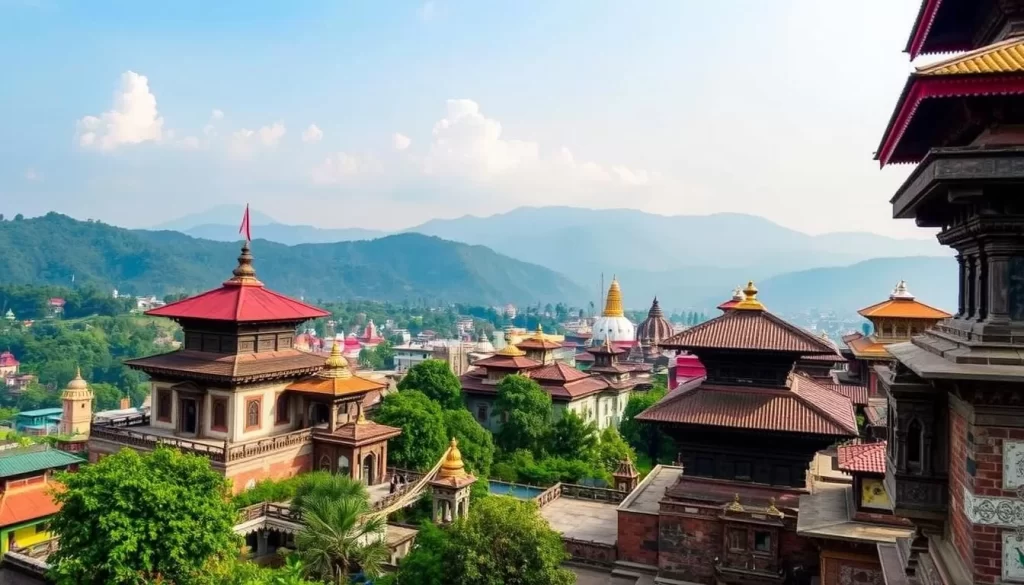
As you explore the Kathmandu Valley, you’ll discover a rich tapestry of cultural heritage. The valley is home to seven monument zones that together form a UNESCO World Heritage Site, showcasing Nepal’s rich architectural and cultural heritage dating back centuries.
The Kathmandu Valley houses several heritage sites that are steeped in history and culture. These include the Kathmandu Durbar Square, Bhaktapur, and Patan, each offering a unique glimpse into Nepal’s past.
Kathmandu Durbar Square
Kathmandu Durbar Square, despite being damaged in the 2015 earthquake, remains an impressive complex of palaces, courtyards, and temples that served as the royal residence until the 19th century. This historic site is a testament to the architectural prowess of the Nepalese people.
Bhaktapur’s Medieval Charm
Image of Bhaktapur’s Medieval Charmrompt>
Bhaktapur, often called the “City of Devotees,” offers the most well-preserved medieval town experience in Nepal. Its brick streets, wooden temples, and traditional pottery squares make it a must-visit destination.
Patan’s Cultural Treasures
Image of Patan’s Cultural Treasures
Patan, also known as Lalitpur, features some of the finest metalwork and religious art in Nepal, centered around its own stunning Durbar Square. The city’s culture and heritage are palpable as you explore its historic sites.
Wildlife Safari in Chitwan National Park
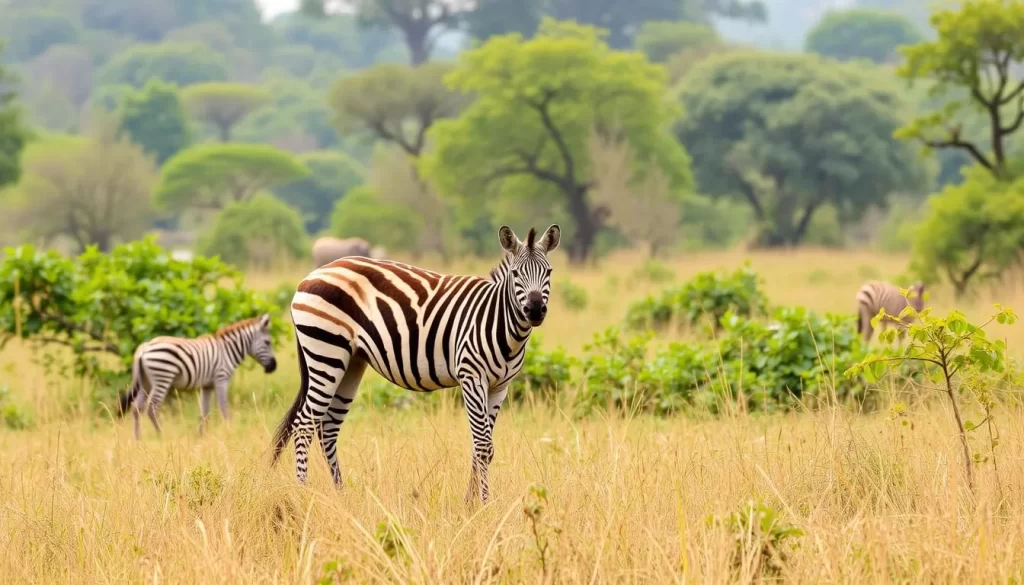
In the heart of Nepal’s Terai, Chitwan National Park beckons with its promise of an exhilarating wildlife safari. This national park is a haven for wildlife enthusiasts, offering a unique opportunity to explore the rich biodiversity of the region.
Spotting One-Horned Rhinoceros
Chitwan is renowned for its successful conservation of the endangered one-horned rhinoceros. With over 500 individuals, rhino sightings are almost guaranteed during your visit.
Bengal Tiger Tracking
The park is also home to a significant population of Bengal tigers. While spotting these elusive cats requires patience, the park’s conservation efforts have led to an increase in their numbers.
Safari Options and Accommodations
Visitors can choose from various safari options, including jeep tours, guided walking safaris, and canoe rides. Accommodations range from basic lodges to luxury wildlife resorts, many offering package deals that include guided safari activities.
White Water Rafting Adventures
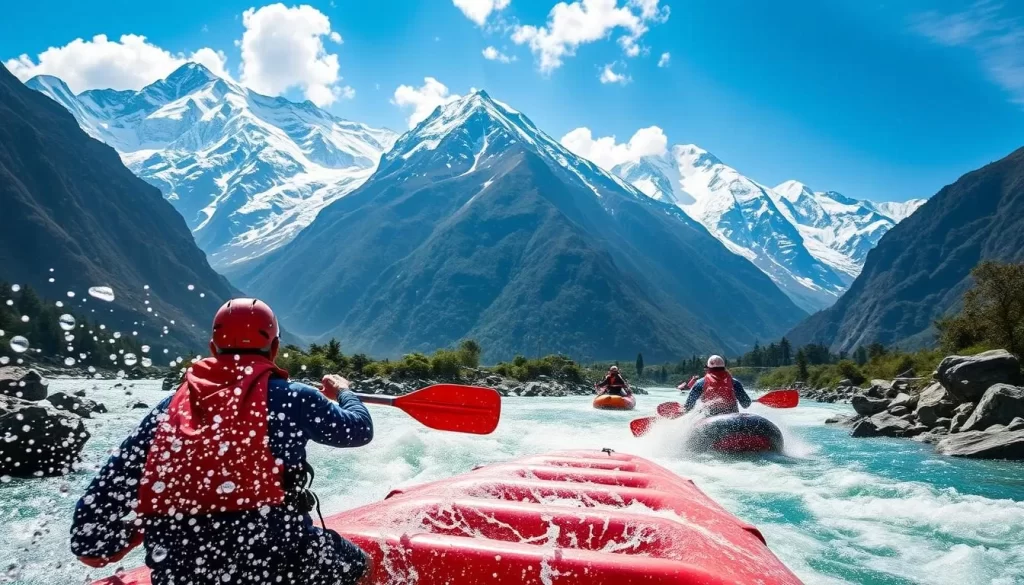
Get ready for an adrenaline rush like no other in Nepal’s white water rafting scene. Nepal’s dramatic topography creates perfect conditions for white water rafting, with rivers descending rapidly from the Himalayas to the plains, offering rapids for all skill levels.
Best Rivers for Rafting in Nepal
The Trisuli River is perfect for beginners and short trips, located conveniently along the main highway between Kathmandu and Pokhara, making it easy to add a day of rafting to your itinerary. For more experienced rafters, the Bhote Kosi offers intense grade 4-5 rapids just a few hours from Kathmandu, providing an adrenaline-pumping trip.
Multi-Day Rafting Expeditions
Multi-day rafting expeditions on rivers like the Sun Kosi (the “River of Gold”) combine thrilling rapids with peaceful floating sections and camping on pristine river beaches along the way. These longer trips offer a unique perspective on rural Nepal, passing through villages and landscapes inaccessible by road, with guides preparing meals and setting up camp each evening. You can book a guided tour to make the most of your experience.
Spiritual Experiences at Sacred Sites
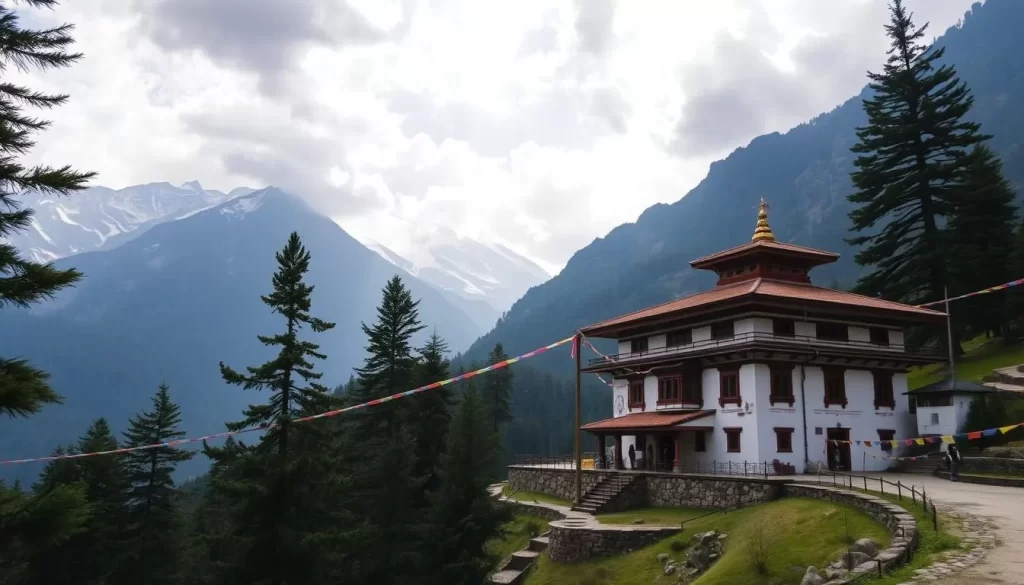
As you explore Nepal, you’ll discover a rich tapestry of spiritual experiences waiting to be uncovered. Nepal’s spiritual landscape is incredibly diverse, with sacred sites that hold deep significance for Hindus, Buddhists, and practitioners of indigenous faiths.
Boudhanath Stupa
Boudhanath Stupa, one of the largest spherical stupas in the world, serves as the center of Tibetan Buddhism in Nepal. Here, you can witness devotees performing kora (ritual circumambulation) at dawn and dusk, creating a serene atmosphere.
Pashupatinath Temple
Pashupatinath Temple, Nepal’s holiest Hindu site, offers a profound glimpse into Hindu death rituals along the Bagmati River. Cremations take place in the open air, providing a unique insight into the local culture and spiritual practices.
Lumbini – Birthplace of Buddha
Lumbini, the birthplace of Buddha, is a UNESCO World Heritage Site featuring the sacred Maya Devi Temple. This temple is built over the exact spot where Queen Maya Devi gave birth to Siddhartha Gautama, making it a significant pilgrimage site for Buddhists worldwide.
These spiritual sites aren’t just tourist attractions but living centers of faith where you can observe genuine devotion and perhaps experience a moment of peace and reflection in your own life. Many visitors find that spending time at these sacred places provides a deeper understanding of Nepal’s cultural fabric and the important role spirituality plays in everyday life.
Nepal: Best Things to Do for Adventure Seekers
For adventure seekers, Nepal is a paradise that offers a wide range of thrilling activities amidst its majestic mountains. Beyond trekking, Nepal provides numerous opportunities for adrenaline-pumping experiences that take advantage of its dramatic landscapes and varying altitudes.
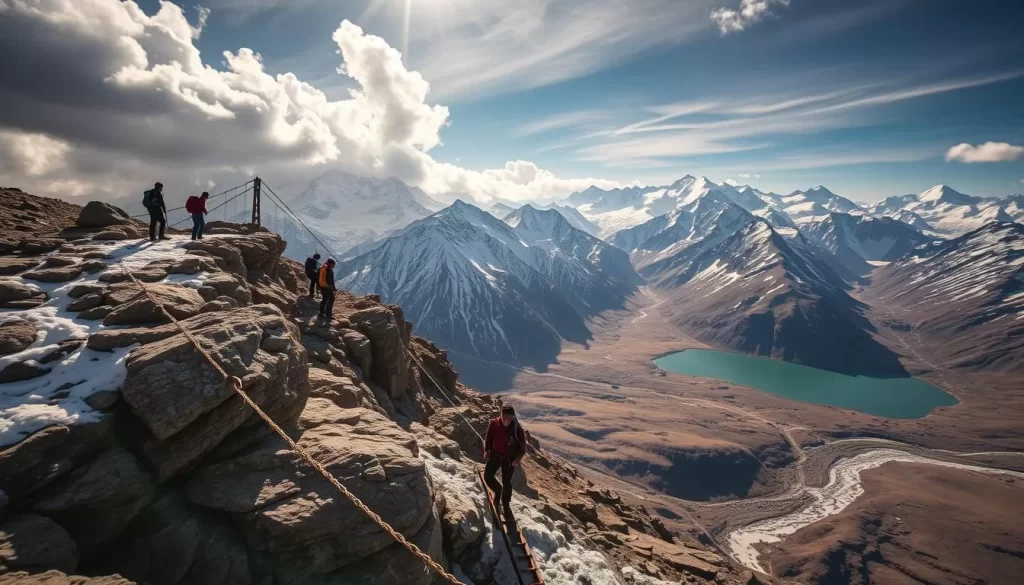
Paragliding in Pokhara
Paragliding in Pokhara is one of the most spectacular aerial experiences in the world. You’ll soar like a bird against the backdrop of the Annapurna range while floating above Phewa Lake, taking in breathtaking views. Pokhara’s Sarangkot Hill is a beloved paragliding spot due to its stable thermals.
Bungee Jumping and Canyon Swing
The Last Resort, located on the Nepal-Tibet border, offers Nepal’s highest bungee jump (160m) and a giant canyon swing over the wild Bhote Kosi River gorge. This place is a must-visit for adventure enthusiasts looking to push their limits.
Mountain Biking and Rock Climbing
Nepal is also a great destination for mountain biking and rock climbing. You can explore technical single-track trails in the Kathmandu Valley or embark on epic multi-day rides through remote town villages. Rock climbing opportunities abound, from natural rock faces near Pokhara to artificial climbing walls in Kathmandu, making Nepal an ideal trip destination for adventure seekers.
These adventure activities can be easily incorporated into your Nepal trip, with most operators providing all necessary equipment and safety briefings for first-timers, ensuring a safe and enjoyable experience.
Experiencing Nepali Culture and Festivals
You can immerse yourself in Nepali culture by participating in its colorful festivals, a highlight of any visit to Nepal. Nepal’s festivals are a vibrant expression of its rich cultural heritage, blending religious devotion with community celebrations.
Dasain and Tihar Celebrations
Dasain, Nepal’s longest and most significant festival, is a 15-day celebration in September or October, marking the triumph of good over evil. It’s a time for families to reunite, enjoy feasts, and participate in traditional rituals. Tihar, or the Festival of Lights, follows Dasain, where homes are adorned with oil lamps and colorful rangoli patterns, honoring crows, dogs, cows, and brothers.
Maha Shivaratri at Pashupatinath
Maha Shivaratri transforms the Pashupatinath Temple into a massive gathering of Hindu devotees and sadhus, who come to honor Lord Shiva. This day is marked by fervent worship, bonfires, and evening vigils in all Hindu areas, showcasing the deep connection between the locals and their religious traditions.
The temples and surrounding areas come alive with people from all over the subcontinent, creating an electrifying atmosphere. Participating in these festivals offers a unique glimpse into Nepal’s culture, allowing you to experience the country at its most vibrant.
| Festival | Description | Time of Year |
|---|---|---|
| Dasain | Celebrates the victory of good over evil | September/October |
| Tihar | Festival of Lights, honoring various animals and siblings | October/November |
| Maha Shivaratri | Hindu festival honoring Lord Shiva | February/March |
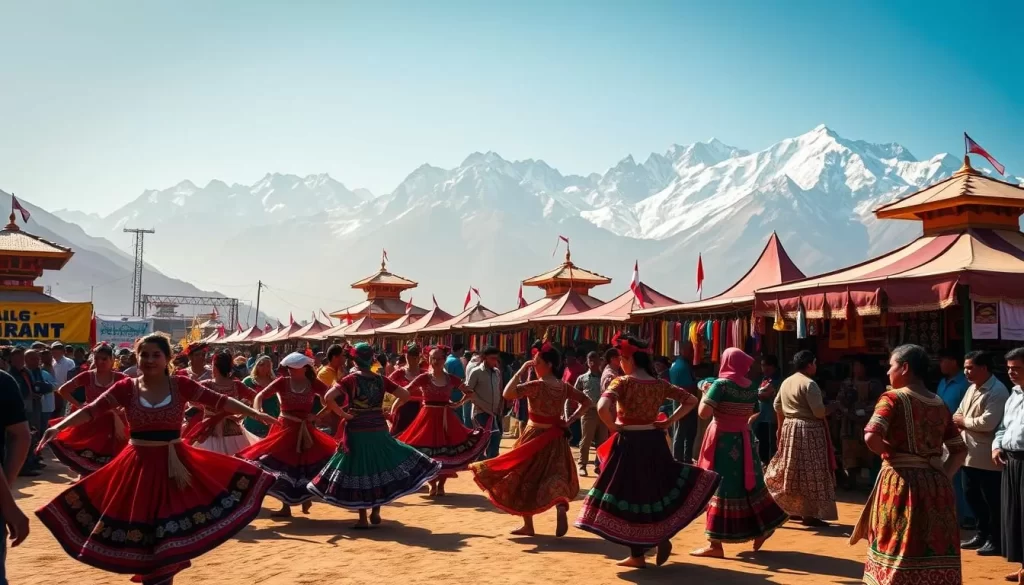
Relaxing by Phewa Lake in Pokhara
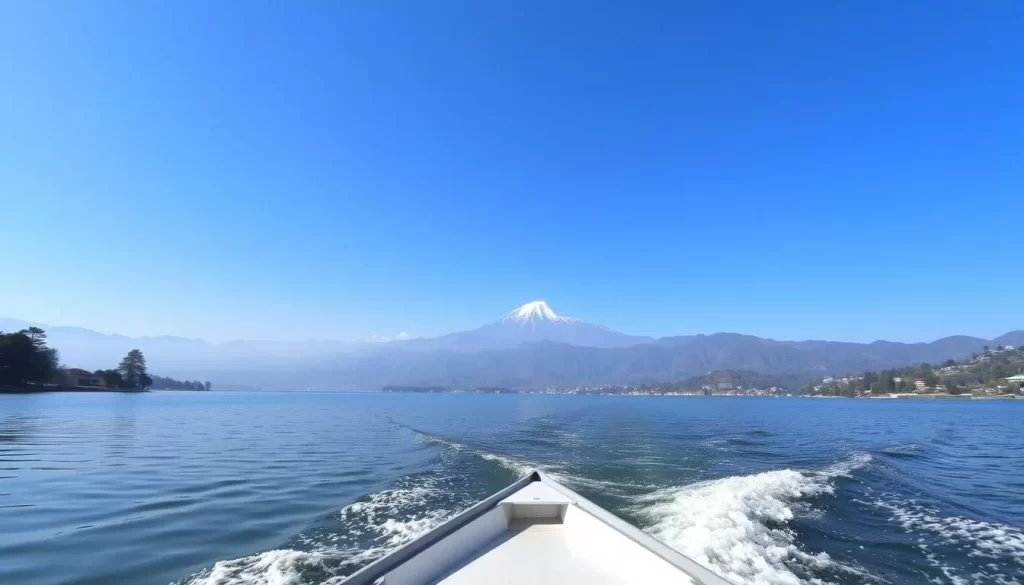
Phewa Tal, or Phewa Lake, is a gem in Pokhara that shines with its peaceful ambiance and stunning views. As a holy site for Nepalis, it offers a serene escape from the hustle and bustle of daily life.
Boating on the Lake
One of the best ways to experience the tranquility of Phewa Lake is by taking a boat ride. You can rent a colorful wooden boat to paddle across the lake, visiting the island temple of Tal Barahi in the middle of the lake. The calm morning waters often create perfect mirror reflections of the Annapurna range, making early morning boat rides particularly magical for photographers.
Enjoying Sunset Views of the Annapurna Range
The sunset views from the lakeside promenade are spectacular, with the fishtail peak of Machhapuchhre often glowing orange and pink as the sun sets behind the mountains. You can also visit the World Peace Pagoda (Shanti Stupa) on the southern shore, which provides panoramic views of the lake, city, and mountain range. It’s accessible by boat and a short hike or by taxi.
Lakeside Pokhara offers numerous cafes and restaurants with lake views, perfect for spending a relaxing day or romantic night enjoying the scenery after more strenuous activities. The peace pagoda and the surrounding landscape offer great views that are sure to leave you in awe.
Exploring Off-the-Beaten-Path Destinations
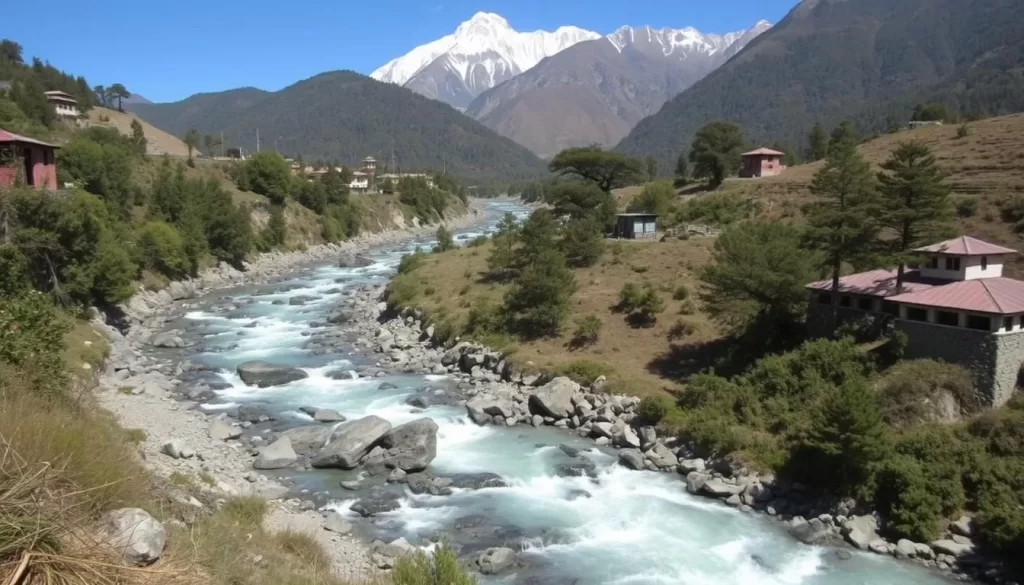
For travelers seeking more than the usual tourist trail, Nepal offers a wealth of off-the-beaten-path destinations. Venturing beyond the popular tourist circuit rewards you with authentic experiences and fewer crowds at some truly spectacular places.
Bandipur’s Traditional Charm
Bandipur, a beautifully preserved Newari town perched on a ridge, offers a glimpse into traditional Nepali life. Its car-free bazaar and 18th-century architecture make it a peaceful and popular tourist destination. The town’s elevated position provides stunning panoramic views of the Himalayan range, including Dhaulagiri, Annapurna, and Manaslu.
Bardia National Park’s Wilderness
Bardia National Park in western Nepal provides a wilder, less commercialized safari experience than Chitwan. The park’s remote location means fewer visitors, allowing for a more intimate wildlife experience as you explore its grasslands, sal forests, and river systems. It’s now part of the largest Bengal tiger conservation area in Asia.
Savoring Nepali Cuisine
Savoring Nepali cuisine is an experience that will take you on a journey through the country’s diverse geography and cultural influences. Nepal, and specifically its capital Kathmandu, is renowned as the budget cuisine capital of Asia, but its true culinary identity lies beyond the pseudo-Western food served in tourist restaurants.
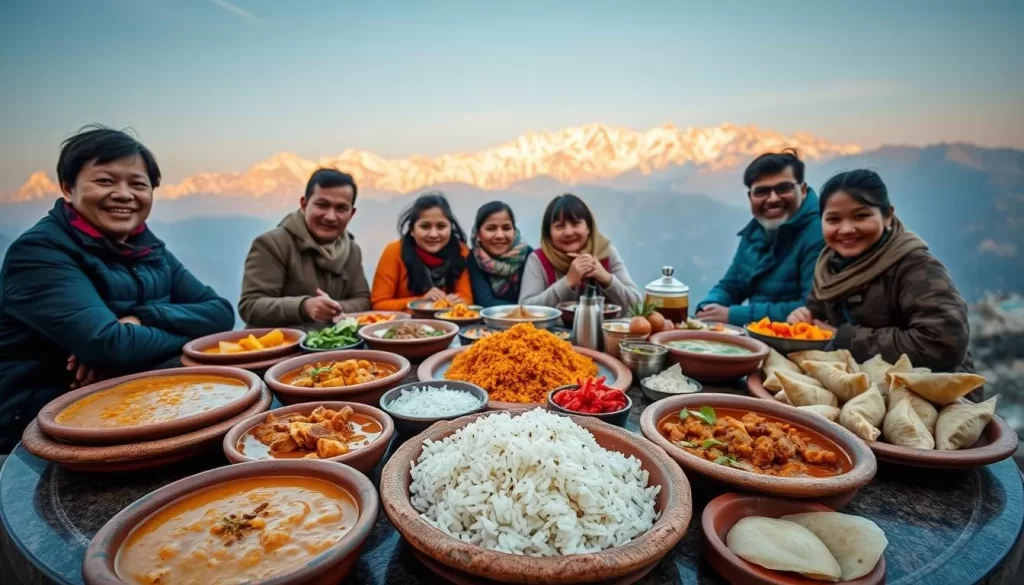
Nepali cuisine reflects the country’s varied geography and cultural heritage, offering a range of dishes that are both nourishing and flavorful. You can experience the authentic taste of Nepal by trying traditional dishes and exploring local eateries.
Must-Try Traditional Dishes
Nepali cuisine boasts a variety of traditional dishes that are a must-try. Dal bhat, a hearty combination of lentil soup, rice, and vegetable curry, is a staple that provides perfect fuel for trekkers. Momos, or dumplings, are another beloved food, available everywhere from street stalls to high-end restaurants, with fillings ranging from buffalo meat to vegetables and cheese.
Best Food Experiences in Nepal
To truly experience Nepali cuisine, venture beyond tourist restaurants in the capital and try local eateries where dishes are prepared the traditional way. You can also have a home-cooked meal with a local family, take a cooking class to learn how to prepare Nepali specialties, or explore the vibrant street food scene in cities like Kathmandu and Pokhara, interacting with locals and discovering new things to taste and enjoy.
Wellness Retreats: Yoga and Meditation
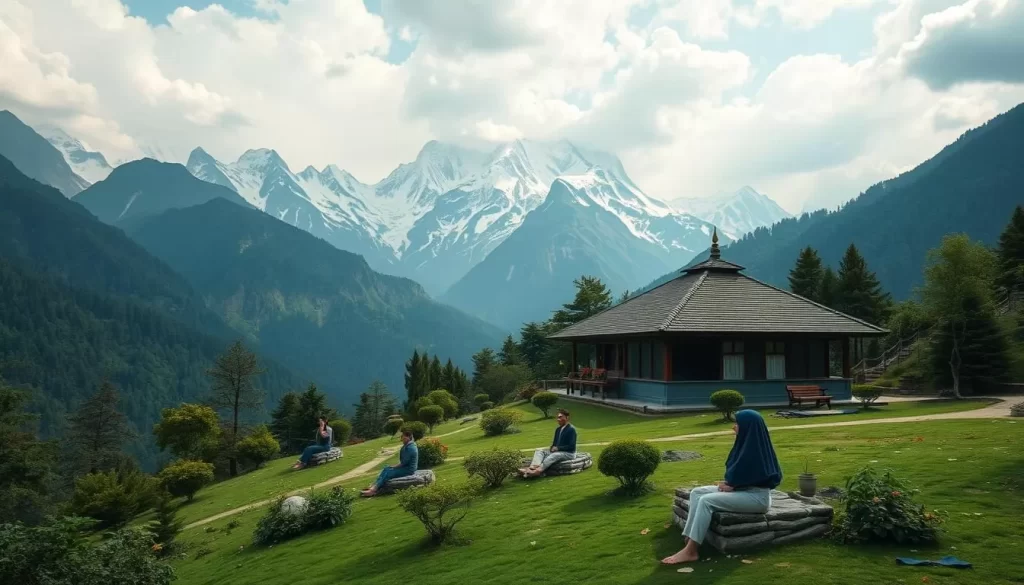
Nepal offers a unique blend of natural beauty and spiritual practices, making it a haven for those seeking yoga and meditation retreats. You can find numerous yoga classes, meditation sessions, and retreats inspired by Hindu and Buddhist traditions in Kathmandu and Pokhara.
Mountain Meditation Centers
Many mountain meditation centers are located near ancient monasteries, offering authentic Buddhist meditation practices taught by monks or experienced teachers. These centers provide a peaceful and inspiring setting for meditation and spiritual growth, allowing you to connect with nature and your inner self.
Yoga Retreats in Pokhara and Kathmandu
Pokhara’s lakeside area has become a hub for yoga retreats, with numerous centers offering daily classes, teacher training courses, and retreat packages with lake and mountain views. Kathmandu Valley hosts some of Nepal’s most established yoga centers, including traditional ashrams where you can immerse yourself in yogic lifestyle and philosophy.
Conclusion: Planning Your Unforgettable Nepal Adventure
Your journey to Nepal can be tailored to fit your interests, whether you’re trekking in the Himalayas or exploring the city’s cultural treasures. Planning a trip to Nepal requires balancing your interests, available time, and the country’s seasonal variations.
Most travelers spend between 7-14 days in Nepal, with longer trips allowing you to combine trekking with cultural exploration, wildlife safaris, and adventure activities. Consider working with reputable local guides or tour companies to handle logistics, especially for trekking trips.
When planning, be realistic about your fitness level and allow extra days for acclimatization. Nepal offers accommodation options for all budgets, from simple teahouses to luxury hotels in the capital, making it accessible for solo travelers, couples, or groups.
The above is subject to change.
Check back often to TRAVEL.COM for the latest travel tips and deals.
